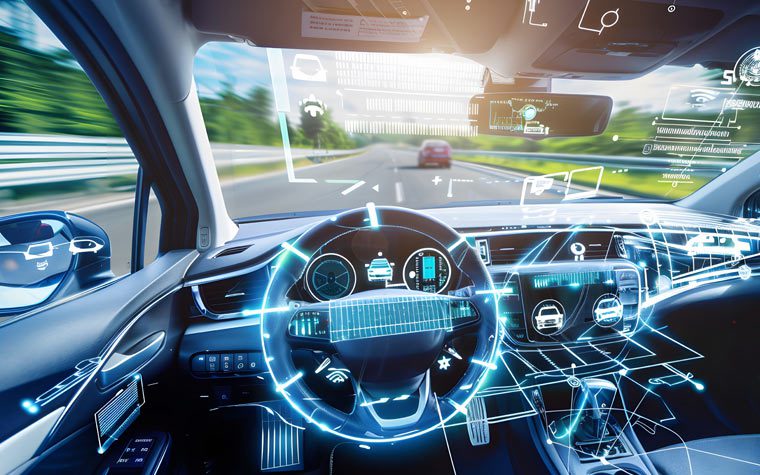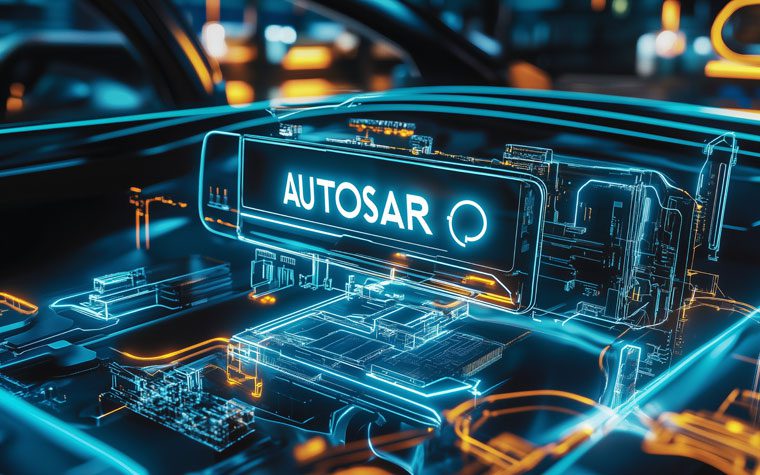
Exploring the Latest Trends in Embedded Automotive Technology
Innovation in the automotive industry is accelerating at an unprecedented pace, fueled by advancements in embedded technology. From intelligent infotainment systems to autonomous driving capabilities, embedded automotive solutions are revolutionizing the driving experience, safety standards, and environmental sustainability.
Let’s explore the latest trends shaping the future of embedded automotive systems.
The Rise of Connected Cars
Connected car technology is reshaping the automotive landscape, enabling vehicles to communicate with each other, infrastructure, and the broader ecosystem. With embedded connectivity features such as 5G, Wi-Fi, and Bluetooth, cars can access real-time traffic data, receive over-the-air software updates, and provide personalized services to drivers and passengers.
The rise of connected cars is driving a shift towards seamless integration with the digital world, paving the way for enhanced safety, convenience, and entertainment on the road.
Evolving Infotainment Systems
Infotainment systems have evolved from basic radio and CD players to sophisticated multimedia platforms, offering a wide range of features and functionalities. Today’s embedded infotainment systems boast touchscreens, voice recognition, and gesture controls, providing drivers and passengers with intuitive interfaces for navigation, communication, and entertainment.
With the integration of AI-powered virtual assistants and augmented reality (AR) displays, infotainment systems are becoming smarter, more immersive, and personalized to individual preferences.
Advanced Driver Assistance Systems (ADAS)
Advanced Driver Assistance Systems (ADAS) represent a significant leap forward in automotive safety, leveraging embedded sensors and computer vision technology to detect and mitigate potential hazards on the road. From adaptive cruise control and lane-keeping assistance to automatic emergency braking and blind-spot monitoring, ADAS features are designed to enhance driver awareness, prevent accidents, and improve overall road safety.
As automakers continue to innovate, we can expect to see further integration of ADAS into vehicles, paving the way for autonomous driving capabilities in the future.
Electrification and Sustainability
The shift towards electrification is driving the adoption of embedded automotive technology in electric and hybrid vehicles. Embedded systems play a crucial role in managing battery performance, optimizing energy consumption, and maximizing range in electric vehicles.
Additionally, embedded sensors and telemetry systems enable real-time monitoring of vehicle performance, allowing drivers to make informed decisions to maximize efficiency and reduce environmental impact. As sustainability becomes a top priority for automakers and consumers alike, embedded automotive technology will continue to play a central role in driving the transition to cleaner and greener transportation solutions.
Enhanced Vehicle Security
With the increasing connectivity of vehicles, cybersecurity has emerged as a critical concern for automakers and drivers. Embedded automotive technology is being deployed to implement robust security measures, such as secure boot protocols, encrypted communication channels, and intrusion detection systems, to protect vehicles from cyber threats.
By integrating cybersecurity features directly into embedded systems, automakers can ensure the integrity, confidentiality, and availability of vehicle data and functionality, safeguarding against potential attacks and vulnerabilities.
Personalized User Experiences
Personalization is becoming a key differentiator in embedded automotive technology, as automakers seek to cater to the diverse preferences and lifestyles of drivers and passengers. Embedded systems are enabling customizable interfaces, adaptive driver profiles, and predictive analytics to deliver personalized user experiences tailored to individual preferences and behaviors.
Whether it’s adjusting seat positions, climate settings, or entertainment preferences, embedded automotive technology is empowering users to create their ideal driving environment, enhancing comfort, convenience, and satisfaction on the road.
Over-the-Air (OTA) Updates
The era of over-the-air (OTA) updates is transforming the way automakers deliver software updates and maintenance services to vehicles. Embedded OTA technology enables automakers to remotely deploy updates, patches, and new features to vehicles without requiring physical access or dealership visits. This not only streamlines the update process but also ensures that vehicles remain up-to-date with the latest software enhancements and security patches, enhancing performance, reliability, and user experience over time.
As we embark on the journey towards the future of mobility, embedded automotive technology will continue to play a central role in shaping the driving experience, safety standards, and environmental sustainability of vehicles.
From connected cars and advanced infotainment systems to electrification and cybersecurity, the latest trends in embedded automotive technology are driving innovation, efficiency, and convenience on the road. As automakers and technology providers collaborate to push the boundaries of what’s possible, we can expect to see even more exciting developments in embedded automotive technology in the years to come. So buckle up and get ready to experience the future of driving firsthand.


